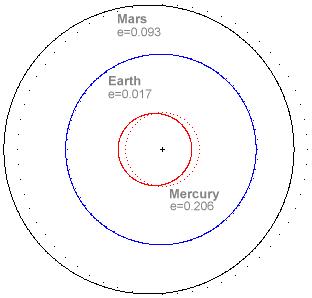|
THE TWINS
The Twins personify, everywhere. The junior (or smaller one) twin is often likened to a woman, and is the dominating elder twin. They are often made into a Male and a Female. With the Barasana Indians of the Brazilian Amazon jungle, the Twins are substituted by the Primordial Couple. These two consist of Jurupari and Romi Kumu. Romi Kumu is the Great Mother, just as Jurupari, is the Great Father. In many other South American nations, the male character of the Twins is dominant, and the other one dominated and effeminate. These two Primordial Castrates closely evoke the ones of Greek mythology (Ouranos and Kronos); themselves copied from Brahma and Shiva, their Hindu archetypes. When one pauses to reflect, it is difficult not to realize their common origin somewhere.
Both the Apache and the Navajos call the Twins by names such as "Killer-of-Enemy Gods" and "Child-of-the-Waters". The other Athabascan-speaking peoples share these names.
Child-of-the-Waters is the junior twin, (smaller one) the helper of his bigger bother. His name is a direct translation of that of the Hindu Apam-Napat, himself an alias of Skanda, the Hindu War-god. These two should be compared to the Twin War Gods of the Pueblo Indians, as commented above.
What the story of Wiyot is indeed telling us, is that the elder, the Solar Twin, dies and resurrects as the lesser one. (This is Earth, being left behind.)
In Navajo mythology, the Great Mother is called Changing Woman. Changing Woman represents the Earth. In addition, her name refers to the idea that our planet periodically sloughs off its old skin (the crust) like a serpent, being reborn as fresh and virginal as a young bride.
This periodic renewal of the world, is the eras of humanity dictated by the Precession of the Equinoxes. In other words, Changing Woman is the same as the Nagis, Serpent Women, of the Hindus, and her myriad counterparts such as Melusine , Kokilan, Ganga, the Queen of Sheba, Echidna, etc. Who, all, symbolize the renewed earth.
The Navajo Twins and Their Old World Counterparts
The Navajo Twins also evoke Amphion and Zethos, the builders of the walls of Thebes, (the asteroid belt?) in Greek mythology. Amphion was rough, brutal, and gigantic like Slayer-of-alien-gods, (father earth) whereas Zethos was slight, gentle and charming like Child-of-the-waters, (mother earth.) The elder twin was born "somewhat precipitately, to the sound of thunder", whereas the younger one was born "mildly to the accompaniment of gentle thunder". (The elder twin, having been born in this solar system, as one of the planets, after the collision, "the sound of thunder.")
Their exploits are also treated in far more detail then those of their counterparts among the South American Indians. There, the Apapocuva Guarani calls the twins Nanderikey and Tiviry, names that mean, respectively "Our Lord" and "Twin". The Twins are also worshipped by the other South American Indians, who call them by equivalent names.
As I said above, some tribes make one of the Twins a female, as is the case of Jurupari and Romi Kumu. These two are, respectively, the Great Father and the Great Mother of the Barasana Indians. Among other Brazilian tribes, for instance the Ava-Katu-Ete and the Ache, the Twins are identified to the Sun and the Moon, and are actually called Kuaray ("Sun") and Yacy ("Moon").
The Primordial Couple of the Barasana Indians of Brazil also closely recalls Yama and Yami, their Hindu equivalents and archetypes. These names mean, respectively, Male Twin and Female Twin, and their myth and role is highly complex in Indian mythology. Shiva and Brahma afford an even closer parallel with the Barasana Twins. Both gods end up by being castrated, like Romi Kumu and Jurupari, (sloughs off its old skin, the crust?) This event takes place repeatedly in different occasions.
Its amazing, the puzzling detail which the Hindus call samkarshana, the mysterious trading of wombs, from one Virgin Mother, to the other.
I believe this trading of wombs describes Earth, when it left the womb of the brown dwarf, and interred into the womb of the sun.
|
|
He states one reason is because, two planets should not form in the same location.
This of course has already been explained, because we have shown that only one planet formed in this location, the other one (Earth) was created around the brown dwarf and then was left here.
He also said one way of checking for the existence of such a planet "would be to look for perturbations of the orbits"
That's a great idea.
First, let's take a look at Earth's orbit.
The orbits of Mercury (red), Earth (blue) and Mars (black). The solid lines indicate each planet's elliptical path around the Sun. The dotted lines show circular paths with the same mean separation from the center. Earth is almost exactly the same distance from the Sun at aphelion and perihelion, but the orbits of Mars and Mercury depart significantly from a circle. For more information, please visit Bridgewater College's Interactive Planetary Orbits web site. None of the planets in are solar system, have perfect orbits around the sun, but Earth has an almost perfect orbit by comparison. The normal seems to be eccentric orbits. Most planets follow orbits that are more elliptical than Earth's. Could it be that this other planet acts like a counter balance to Earth? There has to be a reason that Earth's orbit is so close to perfect. Is a binary orbit system the answer?
Now let's talk about the search for PLANET VULCAN.
|
 The orbits of Mercury (red), Earth (blue) and Mars (black).
The orbits of Mercury (red), Earth (blue) and Mars (black). |






